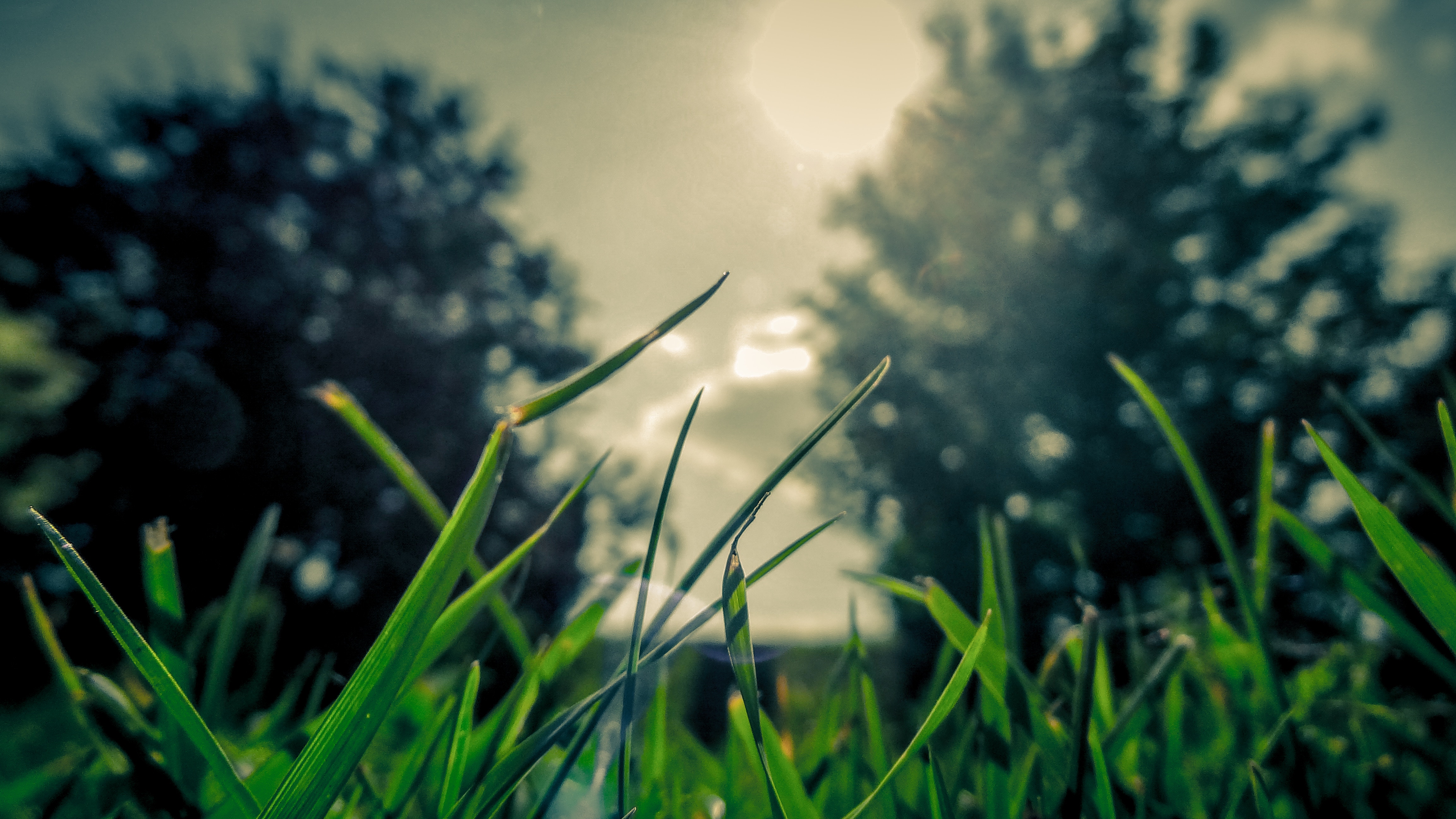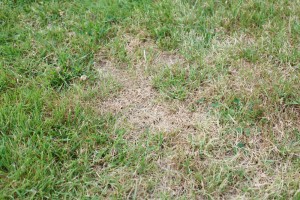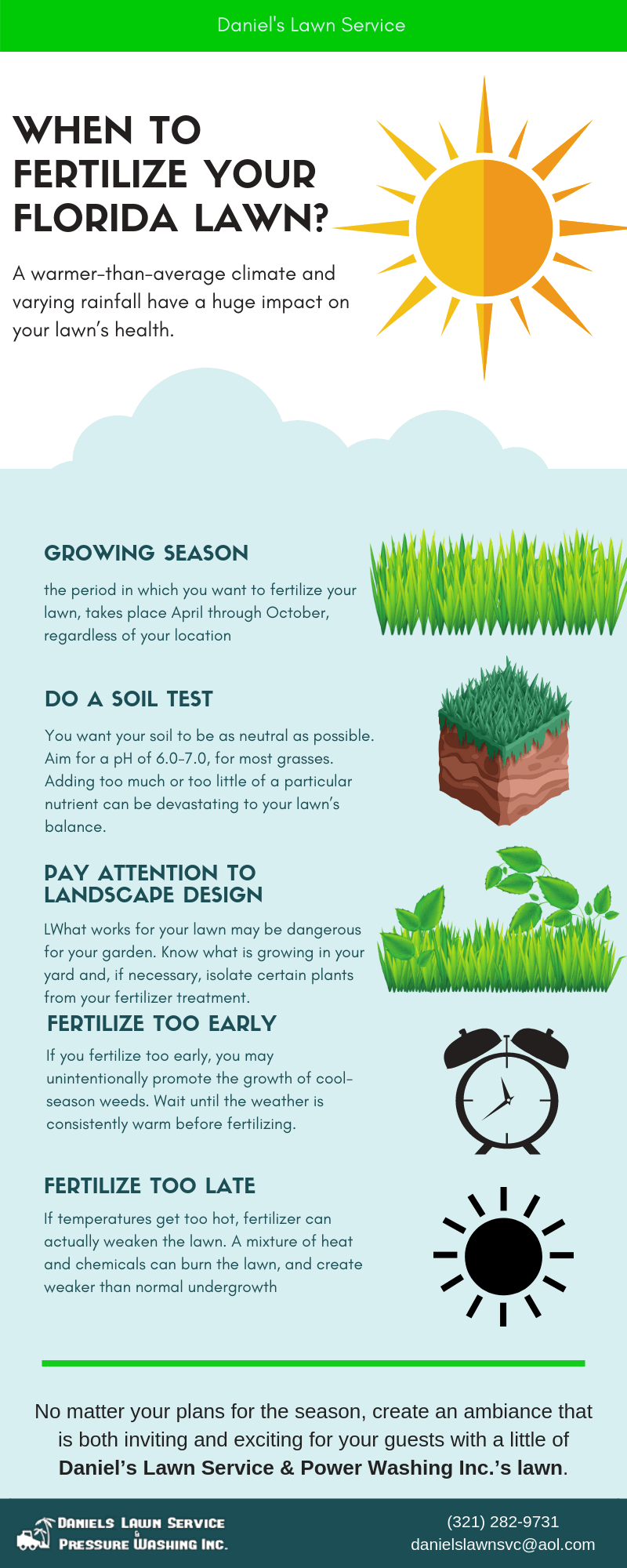
Florida Landscaping Tips
When to fertilize your Florida lawn with a warmer-than-average climate and a varying rainfall, all these factors have a significant impact on your lawn’s health.
One of the biggest perks of being a Floridian is plenty of sunshine all-year-long. Rather than months of cold and frost, we see only a few weeks of cooler weather, annually. For homeowners, this poses a unique question: Do you know when to fertilize your Florida lawn?
Most lawn care advice suggests that lawns need fertilization as soon as the soil temperature reaches 55 degrees. In most of the country, this starts around mid-April. Florida soil, on the other hand, hits 55 degrees only a few times per year. That said, if you have yet to fertilize your lawn this year, it is not yet too late!
What Makes A Florida Lawn Different?
It is hard to follow standard advice when it comes to your Florida lawn. While the majority of the country gets to adjust and plan ahead when it comes to weather, Floridians have to contend with higher than average heat and varying water levels. Drought and flood conditions are often only months apart! Not to mention, the lack of a true winter season. With this many varying factors, knowing the appropriate time to fertilize your lawn can be a major challenge.
 At the sign of the first frost, most types of Florida grass, known as warm season grass, will turn brown. It does not have anything to do with how well you did or didn’t fertilize. These grasses do not have the hardiness that cooler weather ones do. However, many of them bounce back to life rather fast, following a freeze.
At the sign of the first frost, most types of Florida grass, known as warm season grass, will turn brown. It does not have anything to do with how well you did or didn’t fertilize. These grasses do not have the hardiness that cooler weather ones do. However, many of them bounce back to life rather fast, following a freeze.
Facts about Fertilizer:
It is important to know what sort of fertilizer works best for your lawn. A bag of fertilizer has three numbers printed on it. These numbers refer to the percentage of nitrogen, phosphate, and potassium it contains. (For example: 20-5-10 mixture.) The rest of the bag contains a filler material that helps with an even application.
Slow-release fertilizers only need to be applied every 6-8 weeks, rather than the standard recommendation of every four weeks. You want to aim for 2-3 pounds of nitrogen during each growing season. Growing season, the period in which you want to fertilize your lawn, takes place April through October, regardless of your location.
For the last fertilization of the year, consider an organic fertilizer. One way to do this is to cut your grass with a mulch cutter and allow the clippings to sit on top of the grass. Choosing this method provides as much nitrogen as one treatment of bagged fertilizer. Going this round may be the difference between a healthy lawn and an over-fertilized one.
Be cautious of over-fertilizing. You want the grass to be greener and fuller than it is tall. Too much fertilizer can cause overgrowth and a lot of extra work for you. Too little fertilizer is better than adding too much.
What Grass is in Your Lawn?
 In Florida, you will find the following grasses in your lawn:
In Florida, you will find the following grasses in your lawn:
Bahia– an all-purpose grass, with a lower risk of disease and insect problems. It is often used in pastures for beef consumption.
Bermuda– also known as couch grass, is drought-resistant and makes a good turf. It is one of the most common lawn grass types.
Centipede– a low-maintenance, heat tolerant grass with low nutrient requirements. Grows from the spring into the hot summer months.
St. Augustine– Grows best in tropical climates, often seen on shorelines where there is ample moisture.
Zoysia– hardy grass, stands high-heat and drought conditions. Low maintenance. Suitable for southern states.
Knowing what types of grass grow in your yard is essential to a healthy fertilization. As nutrient needs vary between types of different grasses, it pays to do your research.
Wait! Before You Fertilize, Do This:
 If hiring lawn care services are not in your budget, make sure you use granular fertilizer. Granular fertilizer is the easiest way to get an even spread, without utilizing a professional fertilization method.
If hiring lawn care services are not in your budget, make sure you use granular fertilizer. Granular fertilizer is the easiest way to get an even spread, without utilizing a professional fertilization method.
Do a soil test. You want your soil to be as neutral as possible. Aim for a pH of 6.0-7.0, for most grasses. Adding too much or too little of a particular nutrient can be devastating to your lawn’s balance.
Pay attention to other plants in your landscape design. What works for your lawn may be dangerous for your garden. Know what is growing in your yard and, if necessary, isolate certain plants from your fertilizer treatment.
Timing is Everything:
If you fertilize too early, you may unintentionally promote the growth of cool-season weeds. Wait until the weather is consistently warm before fertilizing.
If temperatures get too hot, fertilizer can actually weaken the lawn. A mixture of heat and chemicals can burn the lawn, and create weaker than normal undergrowth. A burned lawn creates problems for your lawn’s appearance for years to come.
If you are still unsure when to fertilize your Florida lawn, do not be afraid to consult a professional. Lawn advice is not one-size-fits-all! If you wish to hire a lawn service Orlando Fl to help you with your yard fertilization, give Daniel’s Lawn Service a call.



